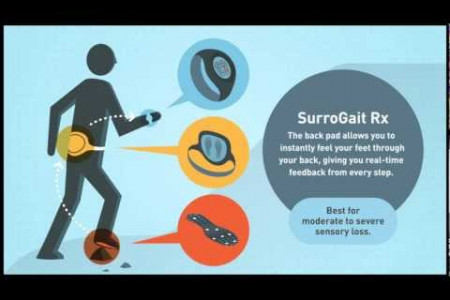
Diabetes and How it Affects You
DIABETES and how it affects YOU What is Diabetes? Diabetes is a condition where glucose (sugar) cannot get into the cells to provide energy and stays in the blood stream. High blood sugar can be life-threatening and causes long-term damage to many organs. Liver Stomach In Type 1 Diabetes: Pancreas Pancreas 1. The body's immune system destroys cells that produce insulin in the pancreas. Types of Diabetes Type 1 Diabetes 2. The pancreas cannot RBC secrete the insulin needed to process The body does not produce insulin, a hormone needed to process blood glucose (blood sugar). glucose entering RBC the bloodstream. GEGlucose I=Insulin Type 1 is usually diagnosed in children and young adults. 3. Blood glucose levels increase. • People with type 1 diabetes need to take insulin every day. In Type 2 Diabetes: Type 2 Diabetes Stomach 1. The stomach Inflammation, often from excessive body fat, disturbs how insulin works. The body Pancreas converts food into glucose. makes more insulin until it 2. The body cannot can no longer keep up. process insulin RBC effectively. The most common form-type 2 diabetes-accounts for 90% to 95% of cases diagnosed in adults. RBC 3. In the pancreas, cells that produce Type 2 usually develops in people who are 45 years or older, overweight or have a family history of diabetes. G=Glucose insulin do not work IEInsulin properly. 4. Blood gluCose levels build up and start damaging Gestational Diabetes: organs • Elevated levels of blood sugar occur during pregnancy. • Women with gestational diabetes have >50% risk of Diabetes getting type 2 diabetes over the next 10 years. >126 mg/di • Treatment is needed during pregnancy to reduce the risk of complications in the mother and fetus. Blood Glucose After <126 mg/dl Pre Diabetes Prediabetes: Fasting: >100 mg/dl • A condition in which blood glucose levels are higher than normal but are not yet high enough to be called diabetes. Normal <100 mg/dlI • 10-30% of people with prediabetes conver to type 2 diabetes per year, but they can prevent it by eating right and exercising more. Did You Know? Over 25 million 25 million 144 Americans have diabetes 1.5 million- In 1958, only 1.5 million people had diabetes. 1958 Today Did You Know? 79 million adults over age 20 have prediabetes. COMPLICATIONS RISK FACTORS FOR FROM DIABETES DIABETES Complications from uncontrolled diabetes can affect nearly every organ of your body and can include: o Over 45 years old o Overweight or obese (having a body mass index 225 kg/m2) o Family history of diabetes mellitus in a first-degree relative • Heart disease and stroke (diabetes can triple the risk of a heart attack) • Eye problems (diabetes is the leading O Physical inactivity (exercising fewer than 3 times per week) cause of adult blindness in the U.S.) • Hearing impairment or loss • Vascular and arterial • Belonging to a high-risk ethnic or racial group disease, gangrene Kidney disease (diabetes is the leading cause of dialysis in the U.S.) o African-American • Hispanic o Native American o Asian-American o Pacific Islanders • Digestive problems • Erectile dysfunction, impotence o History of delivering a baby weighing greater than 9 Ibs. or of gestational diabetes mellitus ED • Nerve damage (neuropathy) that causes tingling, numbness or pain in the limbs • Hypertension (blood pressure 2140/90 mmHg) • Foot ulcers (diabetes is the leading cause of nontraumatic foot amputation) SYMPTOMS OF DIABETES Diabetes is a silent disease-until the complications start. Symptoms of uncontrolled diabetes include: Frequent need to urinate • Excessive thirst or hunger Fatigue, tiredness, exhaustion • Blurred vision SCREENING FOR DIABETES Screening for diabetes is recommended in all people with risk factors for type 2 diabetes. Several blood tests are used to measure blood glucose levels. These include the following: • Random blood sugar test- Measures blood sugar levels at any time in the day, regardless of when you last ate Fasting blood sugar test- A test to measure blood sugar before breakfast • Hemoglobin A1C test– A blood test that can be drawn at any time of day and provides the average blood sugar level over the past 2-3 months • Oral glucose tolerance test- Involves drinking a glucose solution and afterward measuring blood sugar levels over several hours PREVENTION & TREATMENT FOR DIABETES For people living with type 1 or type 2 diabetes: For people with risk factors for diabetes or who have Lifestyle changes also can make a dramatic difference. been diagnosed with prediabetes: Along with the proper medications, making these changes can help to control diabetes and reduce further Adopting a healthy, active lifestyle can be a first step in prevention. health risks resulting from the disease. 1. Make healthy changes to your eating habits and diet 2. Increase your daily physical activity 3. Manage your weight Information for this infographic has been referenced from the following sources: http://www. http://www.cdc.govidiabetes http://ndep.nih.govildiabetes-facts/ Mount Sinai w.diabetes.org/ © 2013 The Mount Sinai Hospital, New York You are free to copy, distribute and transmit this content, but you must attribute the work to Mount Sinai Hospital, New York. Visit www.mountsinai.org/diabetes for more information.
Diabetes and How it Affects You
Source
http://www.m...abetesinfoCategory
HealthGet a Quote





